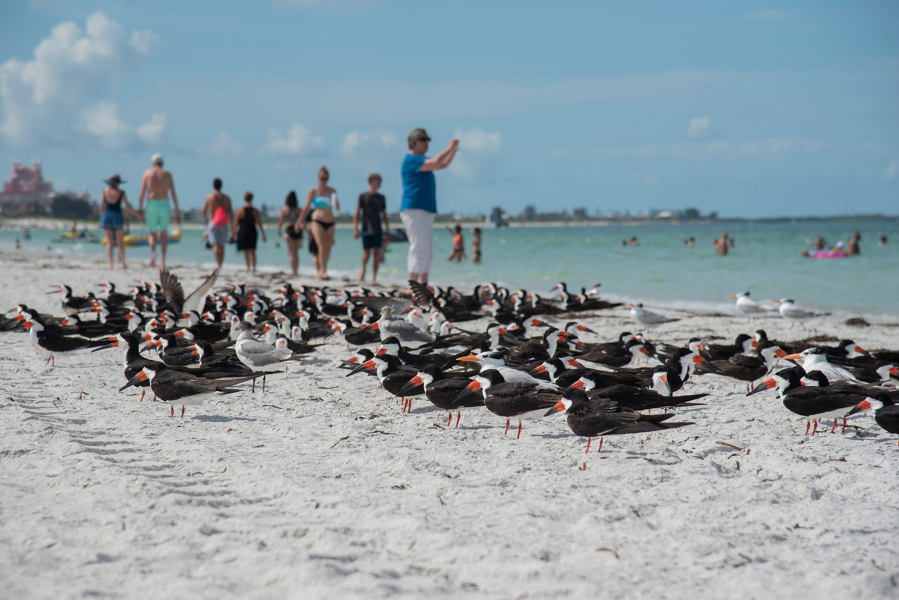TARPON SPRINGS, Fla. – Ed Steponaitis jumps off the boat and trudges through the murky, lukewarm Gulf of Mexico. His shorts soak in the waist-deep saltwater.
He wades 50 yards to Three Rooker Island, a crescent-shaped haven west of Tarpon Springs. Swarms of birds circle above, squeaking and cawing.
On shore, he admires the laughing gulls mingling near the waves. The black skimmers enjoying the balmy June air. An oystercatcher or two. A cormorant. He watches them argue, fish, mate.
“Every time I go out, it’s like the first time,” says Steponaitis, 80.
For four years, he has visited the small sandbar. His treks to Three Rooker are a blessing, “a reason to spend more time in nature,” he says.



